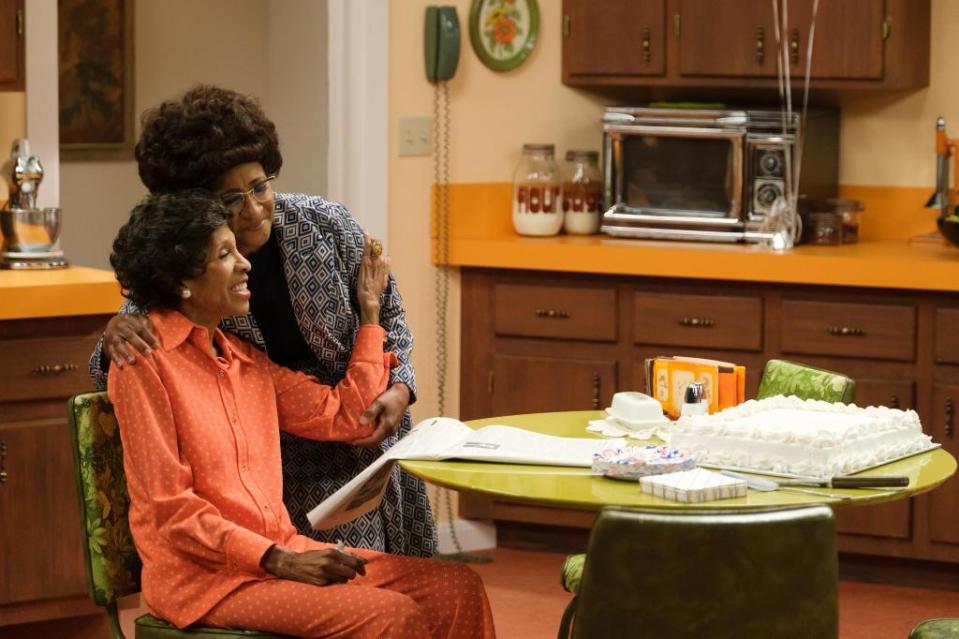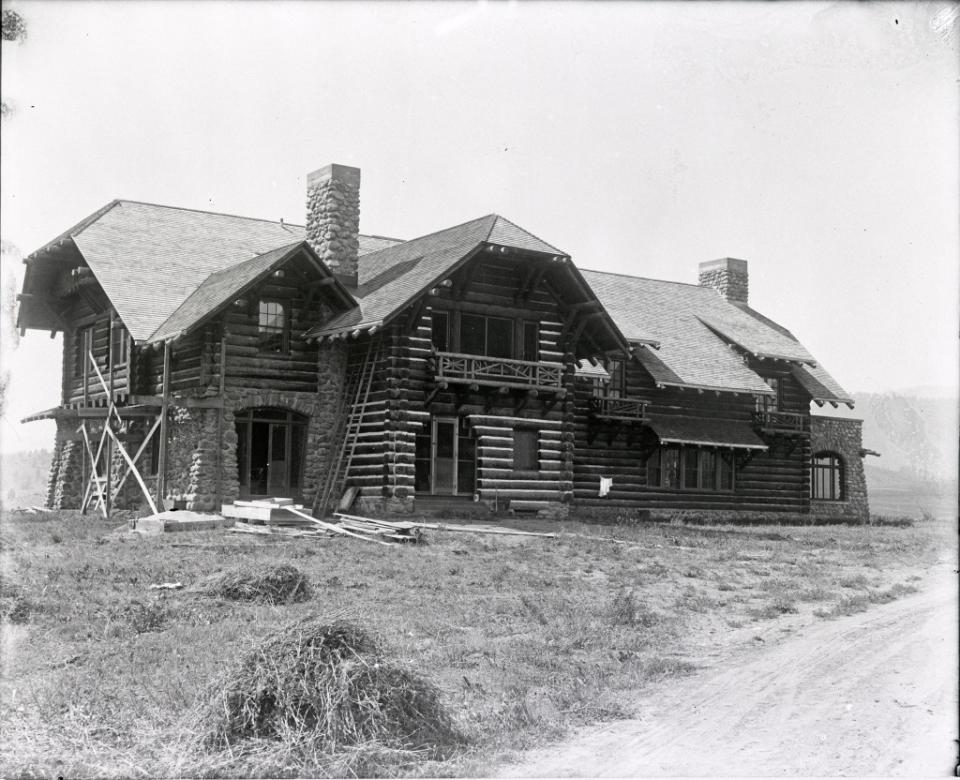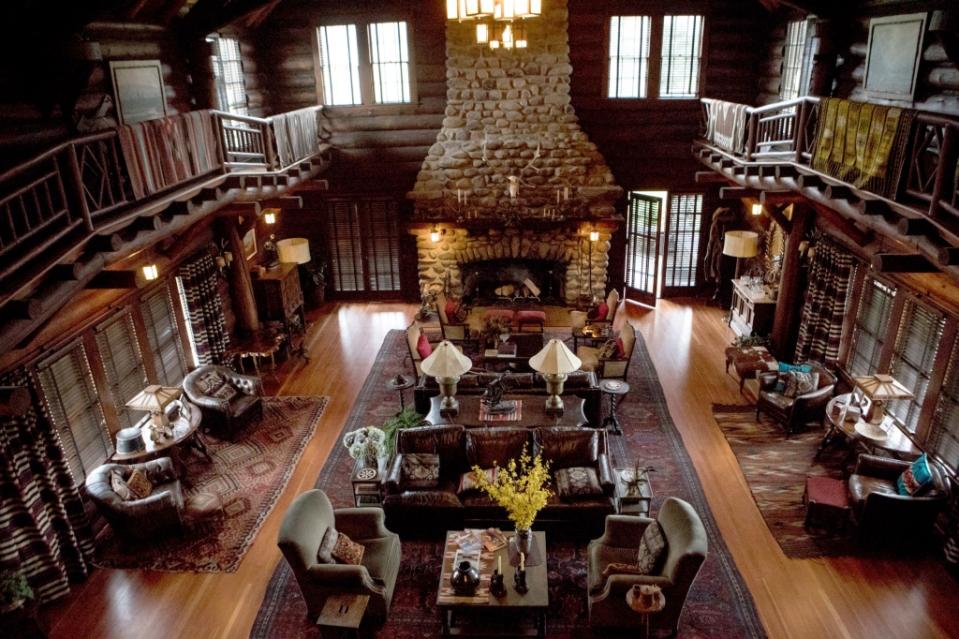Palaces, Ranches and Retro Kitchens: Production Designers for ‘The Great,’ ‘1923’ and ‘History of the World Part II’ Talk Crafting Period-Accurate Sets
- Oops!Something went wrong.Please try again later.

Production designers had their hands full the past year, recreating everything from an 18th century palace large enough for indoor badminton games to retro kitchens that looked like they were straight out of the 1970s. To achieve their period-accurate sets, they consulted books, photos and guild archives.
For the third season of “The Great,” production designer Francesca Di Mottola a built a “gigantic games room where anything could happen and served many different purposes,” horse breeding among them. The production designer began scouting locations in the U.K., where the black comedy about Catherine the Great is filmed, but none quite fit what she was looking for, so she built the room on a soundstage.
More from Variety
The room, which first appeared in episode 3 of the Hulu series, had high ceilings and paneled walls with timber all around. It needed to be large enough for parties in addition to badminton games and horse breeding.

“The palette was dark, and the timber has been seen before in the palace, in the long corridor, so that tied in with other spaces that the audience would know,”Di Mottola says.
Tennis courts were largely indoors during the 18th century, and pictures provided visual references for the room, though Di Mottola felt free to take creative liberties as needed. “We weren’t tied to re-creating a palace that already existed,” she points out.
Knowing that Peter, the character played by Nicholas Hoult, would use the room to mate horses, she also printed out an equine fresco.
“It’s on the top balcony of the game room with these horses looking at one another, and that was the opportunity to use them in the context of that room,” she says.

Similarly, production designer Monica Sotto pored through research for Hulu’s “History of the World Part II” to ensure her sets were historically accurate. “I had History.com open all the time,” says Sotto.
The Shirley Chisholm sketch, for example, parodies 1970s sitcoms. Playing to classic sitcom tropes and invoking Norman Lear’s work, Sotto says, “I looked at iconic African American sitcoms such as ‘The Jeffersons’ and others like ‘All in the Family,’ but also ‘The Golden Girls.’ ”
The production designer dove into the Art Directors Guild archives for research, using color palettes, fabrics and furniture styles from the era to build that particular set. “Avocado green called to me,” Sotto says. “I thought it would be fun to have an orange kitchen counter for warmth. In this subconscious way,
it transports you to that time.”
Sotto also made a point to reference the 1974 film “Blazing Saddles,” starring and directed by Mel Brook, who executive produced and narrated “History of the World Part II.” “I wanted to pay
homage to the vision that Mel had and be in the spirit of the comedy legacy,” Sotto explains.
Santa Clarita’s Sable Ranch proved ideal for the Civil War sketches depicting Ulysses S. Grant and Robert Todd Lincoln on a secret mission that leads them into Confederate territory. Sotto mixed in elements from a New York subway station for an Underground Railroad bit involving Wanda Sykes playing Harriet Tubman. “It was funny and specifically a ‘History of the World’ type set,” she says.

Production designer Cary White relied on photography from the era while expanding the world of the “Yellowstone” universe in “1923,” the Paramount+ series.
The Dutton house that “Yellowstone” viewers are familiar with was filmed at Chief Joseph Ranch
in Darby, Mont. “On the ranch, they didn’t have electricity, so the fixtures needed to be changed,
and the furnishings needed to be changed,” White says of the work on the prequel series.
Helen Mirren plays the matriarch of the Yellowstone Dutton Ranch and her touch needed to be addressed in the surroundings. “This is her world and she’s such a strong character,” White says. “We felt the lodge needed to have a more feminine touch to it, and not that Montana leather furniture you see
in ‘Yellowstone.’”
The series also took him to South Africa and Malta. For the Stanley Hotel where Alex (Julia Schlaepfer) and Spencer (Brandon Sklenar) meet, White says, “We lucked out and found a Victorian building, but the script called for a rooftop bar for them to meet on, except there were none to be found that worked for
that period.” So White took the building’s wraparound balcony and built the bar there.
Problem solved.

Best of Variety
Sign up for Variety’s Newsletter. For the latest news, follow us on Facebook, Twitter, and Instagram.

